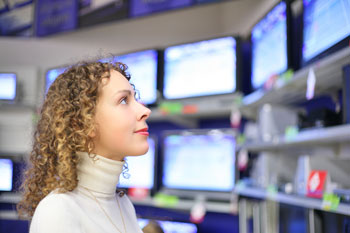Americans placed the most importance on picture quality when shopping for HDTV displays, according to a US consumer survey conducted by a market research firm during the third quarter of 2010. After image quality, purchase price and screen size were the next two most significant factors for potential HDTV buyers in the USA.

The results came from California-based consumer electronics market research and consulting company iSuppli, which polled more than two thousand American households in its quarterly U.S. TV Consumer Preferences survey. Among other things, iSuppli uses these quarterly surveys to monitor the display types, the distributing retailers, the average prices, and the purchase reasons of HDTVs sold in the United States of America.
Although picture quality was correctly deemed as the number one criterion when splashing out on a television, how US consumers assessed a HDTV’s picture performance to arrive at their purchase decisions may be more suspect. iSuppli’s report seemed to suggest that in-store demonstration was the predominant method used by the US public to judge the picture quality on HDTV sets.
This is hardly ideal, because most televisions on the shop floor are usually set to garish and oversaturated [Dynamic] modes to not only counter the bright ambient lighting in stores, but also stand out from competing displays. As a rule of thumb, the viewing experience gained from an in-store demo is substantially different from that to be expected at home.
The survey also revealed an increase in the proportion of LED-based LCD TVs sold in the US throughout the third quarter of this year, and rising consumer interest in IETV (internet-enabled television) sets. Despite these encouraging data, LED backlight technology and web connectivity were not as important to American HDTV buyers as the aforementioned criteria of image quality, price and screen size in swaying their buying decision.
According to iSuppli’s TV analyst Riddhi Patel, a strong brand name was no longer as appealing to US consumers too when shopping for HDTVs, as the on-screen performances among different TV brands were adjudged to be largely similar when demo-ed in stores.